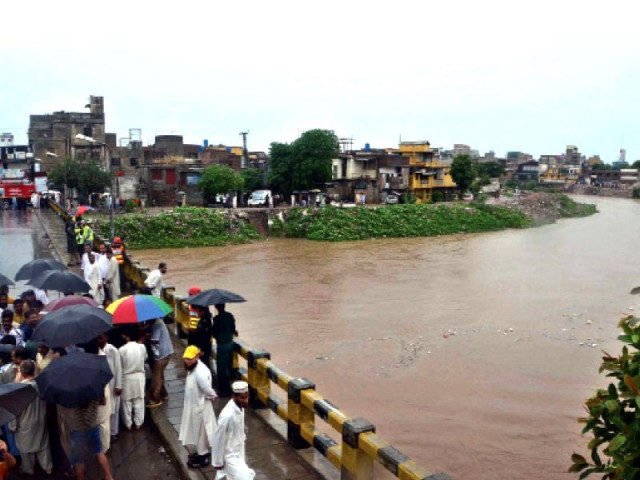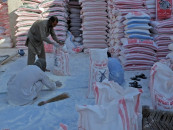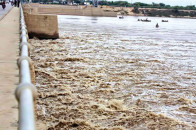Nullah Leh — how natural channel turned into a drain
Channel’s width narrowing with each passing year owing to illegal construction

The Nullah Leh — which passes through the city’s downtown areas — proves a catastrophe for Rawalpindi every monsoon reason, as its width is narrowing with each passing year owing to illegal constructions along its banks and the dumping of construction material.
Once a small river and major source of clean water back in 1877 has virtually turned into a foul-smelling drain. According to historians, it’s water used to be clean that Muslims would perform ablution and Hindus immersed cremated ashes in the river. According to historians, Aryans also lived along the banks of the once crystal clear water, and the 300-year-old Arya Mohalla in Rawalpindi has been named after them.
The river flows out of the Margalla hills, passes through Islamabad and falls into Sawan River. It has a total length of 18-kilometre while it’s 300 to 700 meters width has been reduced to 500 meters because of encroachments.
In the 1960s, when Islamabad was chosen as the capital, its population surged and the clean water channel started getting polluted and turned into a sewer because of the lack of a proper sanitation system.
Terrible floods occur every five to seven years and homes in low-lying areas get flooded.
The flood that hit the Nullah on July 23, 2001, was the most devastating as it affected about 70 per cent of the city and all major markets. A total of 74 people and 742 cattle died while 400,000 families were severely affected 1087 houses were destroyed.
The citizens and traders suffered a loss of Rs8 billion and several affected traders acted economically.
Read Citizens flock to catch fish in rivers, nullahs
Successive rulers including Nawaz Sharif and General Pervez Musharraf made tall announcements, however, no politician has been able to solve the serious problem of the choked drain which has caused 10 horrific floods, 115 deaths, loss of 970 cattle and a financial loss of Rs 10 billion.
The foundation stone of the Leh Expressway project was laid in 2007 by former resident General Pervez Musharraf.
After the Pakistan Muslim League-Nawaz formed the government in Punjab after the 2008 elections, it withheld funds for the project. The project’s estimated cost was only Rs 17 billion initially, which has now risen to Rs90 billion.
Former director of colleges Prof Ulfat Janjua, while talking to The Express Tribune, said that the water of the river was so clear that he saw people consuming its water.
He said that encroachments started to haunt the river when Mohammad Khan Junejo took charge of the government.
He said that even today, Nulla Leh can be made a beautiful location and its water can be purified by installing a treatment plant.
Rawalpindi Development Authority (RDA) Chairman Tariq Murtaza said that they were going to plant trees along the nullah when the Nullah Leh expressway will be constructed.
Talking to The Express Tribune, Interior Minister Sheikh Rashid Ahmed said that the expressway project has been revived and work on the project will be laid this year. Under the project, a complete signal-free road will be constructed under the private-public partnership.
He said that there will be a service road and up to 8-storey buildings on both sides of the bank. Citizens will also be able to build commercial plazas along the banks, he said.
Sabzi Mandi Anjuman-e-Tajiran, President Ghulam Qadir Mir, and Moti Bazaar Anjuman-e-Tajiran, Leader Naveed Kanwal said that they have been listening about the express project for 15 years but it has never seen the light of the day.
Published in The Express Tribune, August 8th, 2021.



















COMMENTS
Comments are moderated and generally will be posted if they are on-topic and not abusive.
For more information, please see our Comments FAQ